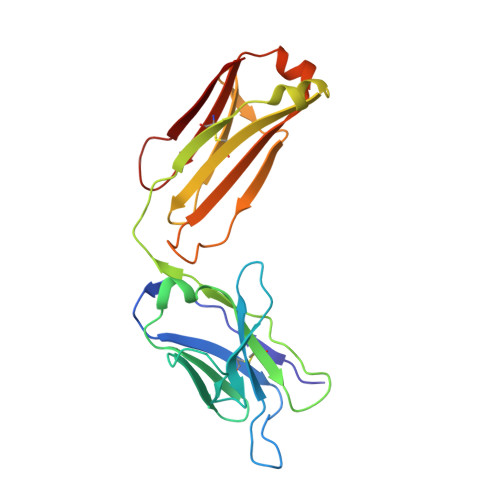Complete reaction cycle of a cocaine catalytic antibody at atomic resolution.
Zhu, X., Dickerson, T.J., Rogers, C.J., Kaufmann, G.F., Mee, J.M., McKenzie, K.M., Janda, K.D., Wilson, I.A.(2006) Structure 14: 205-216
- PubMed: 16472740
- DOI: https://doi.org/10.1016/j.str.2005.10.014
- Primary Citation of Related Structures:
2AJS, 2AJU, 2AJV, 2AJX, 2AJY, 2AJZ, 2AK1 - PubMed Abstract:
Antibody 7A1 hydrolyzes cocaine to produce nonpsychoactive metabolites ecgonine methyl ester and benzoic acid. Crystal structures of 7A1 Fab' and six complexes with substrate cocaine, the transition state analog, products ecgonine methyl ester and benzoic acid together and individually, as well as heptaethylene glycol have been analyzed at 1.5-2.3 angstroms resolution. Here, we present snapshots of the complete cycle of the cocaine hydrolytic reaction at atomic resolution. Significant structural rearrangements occur along the reaction pathway, but they are generally limited to the binding site, including the ligands themselves. Several interacting side chains either change their rotamers or alter their mobility to accommodate the different reaction steps. CDR loop movements (up to 2.3 angstroms) and substantial side chain rearrangements (up to 9 angstroms) alter the shape and size (approximately 320-500 angstroms3) of the antibody active site from "open" to "closed" to "open" for the substrate, transition state, and product states, respectively.
- Department of Molecular Biology, The Scripps Research Institute, 10550 North Torrey Pines Road, La Jolla, California 92037, USA.
Organizational Affiliation:


















